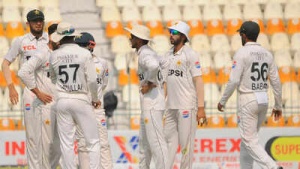Yash Dhull is back where he belongs. His return in the Delhi Premier League (DPL) 2025 is stronger than ever, becoming the first centurion of the season after recovering from a crucial heart surgery. The 22-year-old, touted to be the next big thing in Indian cricket, met with a roadblock in June last year, when the doctors told him that he had a hole in his heart, of about 17 mm. If you are wondering, yes it is possible to have a hole in the heart. Yes. This condition is called congenital heart disease. After surgery, bed rest, and fighting challenges like elevated blood pressure and heart rate during initial recovery attempts, Dhull is back, almost a year after the procedure.
So, what does it mean to have a hole in the heart? Here’s everything you need to know about congenital heart disease and its early symptoms. Take a look.
What is congenital heart diseaseCongenital heart disease (CHD) is a general term for a range of structural problems in the heart that are present at birth. Though some can be more severe than others, all of these prevent normal blood flow through the heart and beyond. These issues include:
- A hole in the heart wall.
- Defects in blood vessels, such as too many or too few, blood flowing too slowly or to the wrong place or direction.
- Issues with the heart valves that control blood flow.
There are many types of congenital heart defects. They range from simple to critical defects.
Simple defects are those that may get better on their own without surgery. They are atrial ventricular septal defects, patent ductus arteriosus, and pulmonary stenosis.
Poll
Should more awareness be raised about congenital heart disease?
Complex and critical defects may be life-threatening, require treatment, and surgery. For instance, Tetralogy of Fallot, which is a combination of four heart changes present at birth, such as:
- Pulmonary valve stenosis: Narrowing of the valve between the heart and the lungs.
- Ventricular septal defect: A hole between the bottom heart chambers
- Right ventricular hypertrophy: Thickening of the right lower chamber of the heart.
- Shifting in the aorta.
The symptoms of congenital heart defects depend on certain factors such as age, number, type, and severity of the heart defect. The symptoms differ in newborns and adults. Some of the common symptoms are:
- Cyanosis: Bluish tone to a baby’s skin or lips
- Rapid breathing
- Rapid heartbeat
- Fatigue, or feeling constantly tired
- Heart murmurs: Unusual sounds between heartbeats, such as a whooshing or swishing noise
- Swelling in the legs, tummy, or around the eyes
- Poor blood circulation
- Shortness of breath during physical activity
- Swelling in hands, ankles, and feet
Timely diagnosis is crucial to prevent complications. Many congenital heart diseases may go unnoticed without symptoms until complications arise. Regular health checkups can catch these conditions early. Also, if these symptoms arise it is important to seek immediate medical attention.
Trump’s Health Mystery DEEPENS: President Hides Massive Bruise From Public Eyes



 Daren Sammy Fined, Handed Demerit Point for Umpire Criticism After Test Match Comments
Daren Sammy Fined, Handed Demerit Point for Umpire Criticism After Test Match Comments
 Gavaskar Calls for Yadav's Inclusion, Questions Middle Order After India's Test Defeat
Gavaskar Calls for Yadav's Inclusion, Questions Middle Order After India's Test Defeat
 Decoding Your Health: Spotting 5 Prediabetes Warning Signs Before a Blood Test
Decoding Your Health: Spotting 5 Prediabetes Warning Signs Before a Blood Test
 X Corp. Cracks Down: Half a Million Indian Accounts Suspended for Policy Breaches
X Corp. Cracks Down: Half a Million Indian Accounts Suspended for Policy Breaches
 Headline:
Early Warning Signs: 5 Heart Attack Symptoms to Watch Out For Weeks in Advance
Headline:
Early Warning Signs: 5 Heart Attack Symptoms to Watch Out For Weeks in Advance
 Facial Icing: Benefits, Risks, and Safe Application of This Viral Beauty Trend
Facial Icing: Benefits, Risks, and Safe Application of This Viral Beauty Trend
 Chess Sensation Praggnanandhaa Joins Magnus Carlsen's Team Liquid for Esports World Cup
Chess Sensation Praggnanandhaa Joins Magnus Carlsen's Team Liquid for Esports World Cup
 Mastering JPG to PDF Conversion: A Graphic Designer's Guide to Quality and Efficiency
Mastering JPG to PDF Conversion: A Graphic Designer's Guide to Quality and Efficiency
 MI New York's Tajinder Dhillon Shines: From IPL Benchwarmer to MLC Star
MI New York's Tajinder Dhillon Shines: From IPL Benchwarmer to MLC Star
 Akmal Blasts PCB's Interim Coach Choice: Ex-Cricketer Questions Logic Behind Mahmood Appointment
Akmal Blasts PCB's Interim Coach Choice: Ex-Cricketer Questions Logic Behind Mahmood Appointment